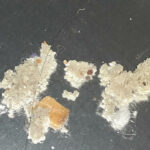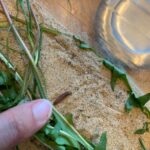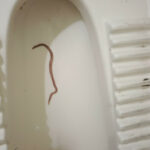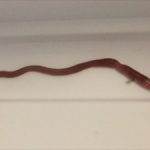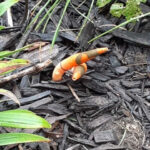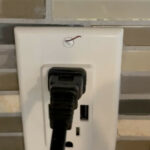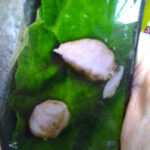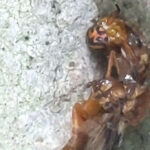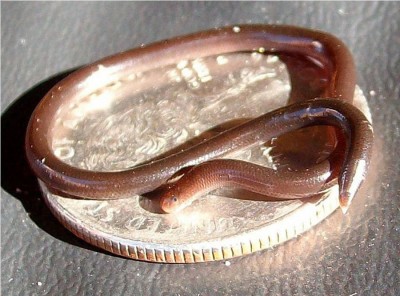
“Can you help me to identify if there is an issue with my wood floors?” asks Sandra in her submission. “I noticed some time ago that my hardwood floors were starting to get blackened areas but I figured it was due to age as the home is over 200 years old. However they recently seem to be getting dark spots faster than I would expect and now there is more spacing between boards than before. I am also noticing lots of stuff In the spaces although I vacuum more than just regularly! The pictures included are of the floors and the stuff in them which I am really hoping is not some sort of insect egg. Any advice would be appreciated.”
We can’t see any worm-like organisms in any of the photos Sandra sent in, so we cannot confirm or deny if this is a worm-related incident. Of course, Sandra does not ask about worms, but rather insect eggs. But in the same vein, while we see white orbs in between the floorboards, the photos are much too blurry to be able to say if they are definitely eggs or not. Besides, if they were the eggs of some wood-boring insect, like the wood-boring beetle, then she would notice other signs of infestation, such as round holes in the wood. Now, all we can do in this case is relay the little knowledge we have on wood and molds, but ultimately, we recommend that Sandra consult someone who specializes in that area: whether that is a professional or another website that deals with this issue. As we are only worm enthusiasts, this is not our area of expertise.
From our sleuthing, we found that it is indeed common for wood to darken over time, so that could very well be what is happening here. Likewise, it might be possible that mold is forming along the wood, though we cannot say for certain because, again, our specialty is worms, not mold. However, this could play into why the wooden boards are moving further and further apart. According to Rob Robillad’s “article on floorboard gaps“, gaps can form inbetween floorboards “when the wood loses its moisture content”.
If there was a big build up of moisture in Sandra’s home (which is typical during winter as homes do not get ventilated as often), that would explain the formation of mold, and then if the moisture has since been released, then the gaps in the wood would start forming. Of course, this is a very surface-level theory from someone who is by no means an expert on taking care of wooden floorboards, or the science behind it.
To conclude, we are not sure what Sandra is dealing with as it is beyond our realm of expertise. We recommend she consult someone who is more knowledgeable about the subject. We hope nonetheless that she finds something here helpful, and we wish her the very best!
All About Worms is always free, always reader-supported. Your tips via CashApp, Venmo, or Paypal are appreciated! Receipts will come from ISIPP Publishing.
You might also find these guys interesting!




